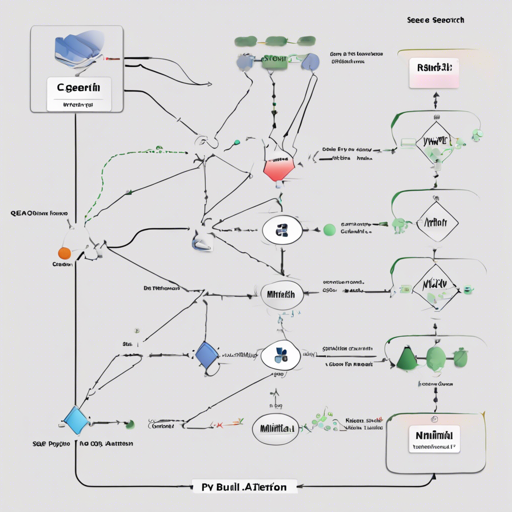Welcome to the world of neural machine translation! In this article, we will embark on a journey to create a Minimal Seq2Seq model that implements attention using PyTorch. Whether you’re a beginner or a seasoned programmer, this article aims to deliver user-friendly insights into constructing a powerful translation tool.
What You Will Learn
- Understanding the Seq2Seq model architecture
- Using attention mechanisms for improved translation
- Deploying the model in a modular and efficient manner
Model Overview
Our Seq2Seq model is an essential component of neural machine translation. This implementation specifically focuses on:
- A modular structure suitable for various projects
- Minimal code for clarity and readability
- Full utilization of GPU and batch training
We leverage torchtext to simplify dataset management and preprocessing, allowing you to focus on the core of your model.
Key Components
Here’s a closer look at the architecture of our model:
- Encoder: A Bidirectional GRU (Gated Recurrent Unit) that captures context from both directions.
- Decoder: A GRU with an attention mechanism that translates the encoded information into target language.
- Attention Mechanism: Enhances translation by focusing on specific parts of the input sequence, as discussed in the paper Neural Machine Translation by Jointly Learning to Align and Translate.

Requirements
Before we dive into coding, make sure you have the following requirements in place:
- GPU with CUDA support
- Python 3
- PyTorch
- torchtext
- Spacy
- NumPy
- Visdom (optional)
To download the necessary tokenizers, run:
python -m spacy download de
python -m spacy download enUnderstanding the Code Through an Analogy
Imagine you are a cook creating a recipe (the Seq2Seq model). First, you gather all your ingredients (requirements like PyTorch, torchtext, etc.). Next, you chop and prepare the ingredients (data preprocessing using torchtext). Once everything is ready, you follow the recipe steps (the code) to cook a delicious meal (the final translation model).
The encoder is like a sous-chef, preparing all the necessary ingredients, while the decoder is the main chef who combines those ingredients into the final dish. The attention mechanism serves as a spice that enhances the flavor by ensuring that certain ingredients are highlighted in the final presentation (translation).
Troubleshooting
If you encounter issues while executing your Seq2Seq model, consider the following troubleshooting tips:
- Check your environment: Ensure that all dependencies are installed correctly. If PyTorch isn’t utilizing your GPU, verify your CUDA installation.
- Review your data: Make sure that the data feeding into the model is preprocessed accurately and matches the expected format.
- Monitor training: Use Visdom or similar tools to visualize the training process and detect any anomalies during training.
For more insights, updates, or to collaborate on AI development projects, stay connected with fxis.ai.
Conclusion
By following this guide, you now know how to build a minimal Seq2Seq model with attention using PyTorch. At fxis.ai, we believe that such advancements are crucial for the future of AI, as they enable more comprehensive and effective solutions. Our team is continually exploring new methodologies to push the envelope in artificial intelligence, ensuring that our clients benefit from the latest technological innovations.

